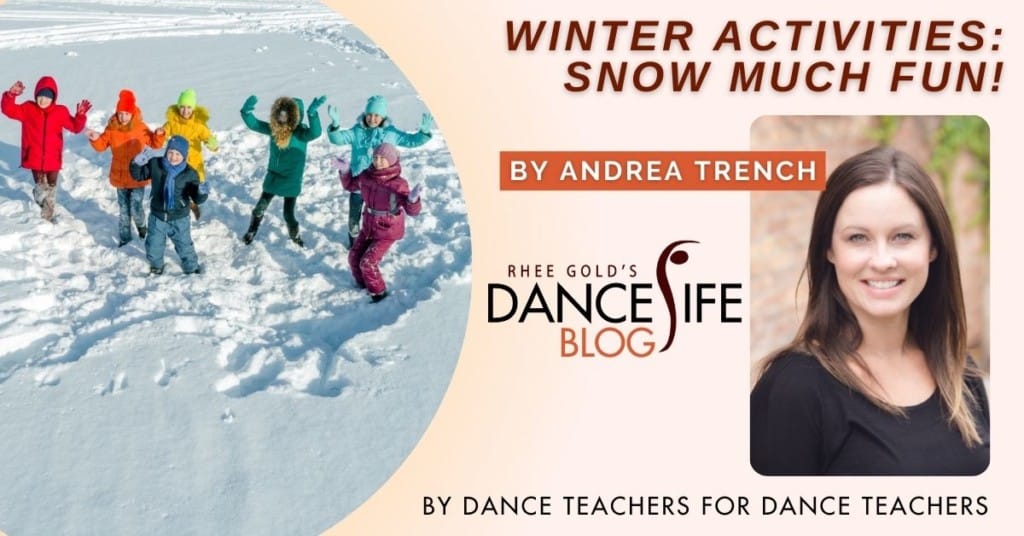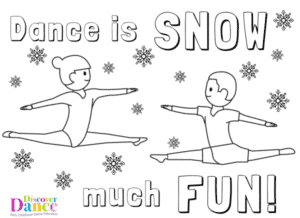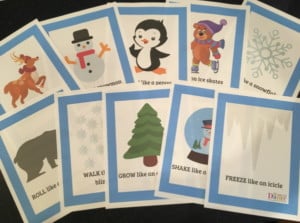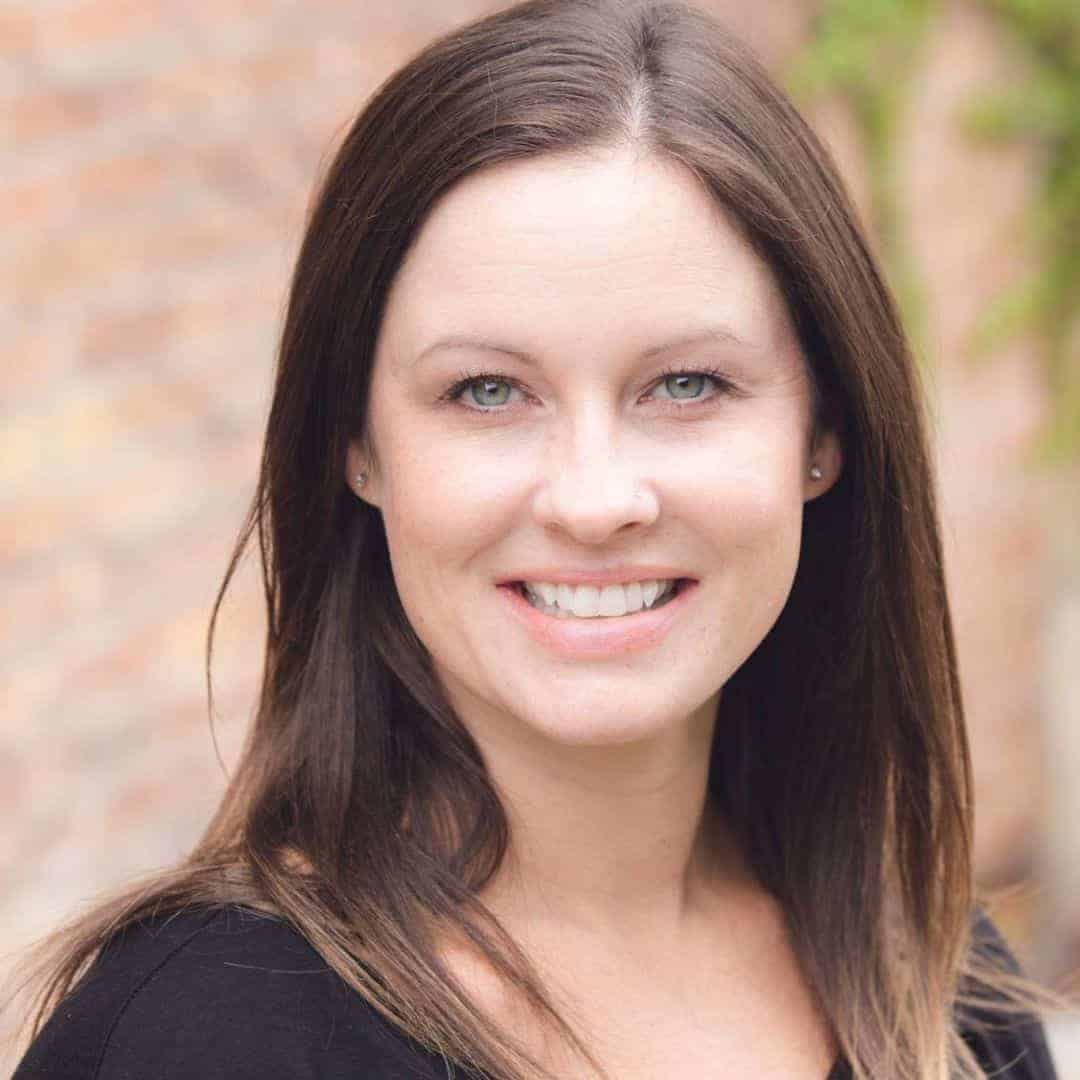Winter Activities: Snow Much Fun!

Now that the dance season is well underway, our little ones are quickly gaining independence and confidence with each passing class. As winter approaches you may be itching to change things up and add new activities to keep your lesson plans fresh and relevant. After all, theming our learning objectives to what children are experiencing in real-life can make learning more meaningful and effective. In addition, adding novelty to our classes ignites excitement and curiosity. It’s what creates the big eyes, wide smiles, and adorable giggles. That’s because when we experience something new and exciting, a rush of the feel good chemical, dopamine, runs through our nervous system yelling to our brain “this is FUN!”. We seek what feels good, therefore, if our dancers are leaving class eager to return, then we can pat ourselves on the back for a job well done.
When it comes to our early childhood classes, it’s important to balance the structure and routine that has gotten us to the level of independence and confidence thus far in our classes with the novelty that keeps us excited and engaged. Rather than create an entirely new themed lesson plan that could lead to an overload of energy, excitement, and possibly, off-task behavior, consider sprinkling in novelty over the course of several weeks. Those familiar activities such as the freeze dance, your weekly warm-up, and ritual hello and goodbye songs will remind dancers that we still have work to do here. However, the novelty in the new activities will help push their creativity, skill development, and participation. Keeping the class balanced between the two is key for learning and successful class management.
Here are some wintry activities to keep your little ones excited, but balanced, all winter long!
Let’s begin with themed music. I’ve put together some of my favorite winter action dances in this Winter Spotify Playlist. If you approach your classes conceptually, I’ve included a list of the songs and the concepts they explore below. There are also some freeze dances on the playlist you can include in your winter lessons.
- North Pole Party Freeze Dance- PLACE
- Walk and Freeze- PLACE, ENERGY
- Shake Them Santa Claus Bones- BODY PARTS
- The Christmas Action Song- PLACE
- The Winter Hokey Pokey- BODY PARTS, RELATIONSHIPS
- Jingle Bell Opposites- DIRECTIONS, LEVEL, SPEED
- Reindeer Pokey- BODY PARTS, RELATIONSHIPS
- Snowflakes, Snowflakes- LEVEL, DIRECTIONS
- Did You Ever See a Penguin?- DIRECTIONS, PATHWAYS
- Ring Those Bells- PLACE
- Jingle Jingle Little Bell- SPEED, LEVEL
- Moving Story- PLACE, LEVEL
- Frosty- SPEED
- The Reindeer Dance- DIRECTIONS
- Santa Shuffle- DIRECTIONS, LEVEL
- Xmas Hop- DIRECTIONS, BODY PARTS
- Swirl and Twirl: Step #1 of The Snowflake Dance- PLACE
- Swirl, Twirl, Melt and Pop Up: Step #2 of The Snowflake Dance- PLACE, ENERGY
Winter movement cards are great for sparking creativity, expanding movement vocabulary, and exploring the concepts of dance. After exploring each movement together as a class, include them in your obstacle courses, lay them around the room for open exploration (great for caregiver/tot classes), or send them to your dance families so they can continue the dance fun at home during winter break!
For older dancers, use these movement cards to create a winter dance! Divide your class into small groups. Have dancers randomly draw cards and place their cards in an order. Dancers then work together to create a short choreographic phrase they can share with the class.
Lastly, send your dancers home with a coloring sheet that expresses how much fun we have in dance class (SNOW much fun!). You could even host a coloring contest. Have the dancers return their coloring sheets back to you and decorate your lobby with their beautiful artwork.
Happy Winter Exploring!
Andrea Trench is dedicated to helping dance teachers create and deliver content that is research-based and developmentally appropriate for children under the age of 6. Her primary focus is classroom management, conceptual teaching, and foundational movement skill development in early childhood dance education. In addition, Andrea uses her 12 years of experience as a partner in a dance studio to inspire, equip, and empower educators.








